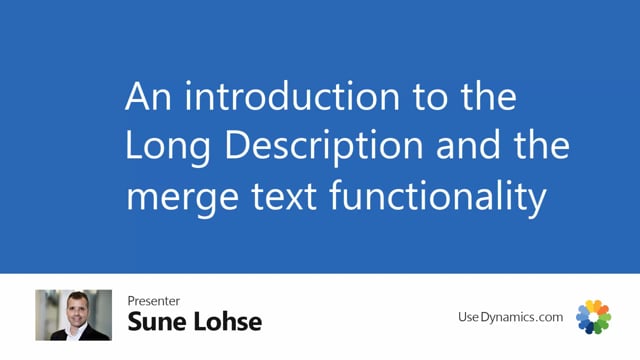
Let me give you a short introduction to the long description functionality and the merch description functionality that applies to some of the tables using master dates information.
And typically you would use this on the item table.
So for instance, we have a long description here, and as you can see, when I mouse over my item number thousand, it says some of the parameters from my item thousand.
And in the end you can see wheel diameter 29 inches.
If I change my specification on that one to be uh, 27 inches instead and I go back, you can see now that my long description, oh, when I refresh my patient page anyway, I just need to go up and down here you can see that my long description is updated to 27 inches.
So that’s a setup determining that, how the long description should be built.
But maybe you also saw in my specification that it changed my description in here.
So my normal description here saying 27 inches were also updated when I added 27 before or 29 now.
And we also changed to other places.
So if we drill down our information code here, the first two we just saw was the long description order.
How would you build the long description? And this code down here is determining that I’d have my information code, my value, my information value when building part of the long description, whereas my description that I just created was only value and information value when I looked into an information setup, we also have what we call a type description.
This field, if you use this field and it requires some setup in the master data information setup, you can determine that the actual item description or item description two should be built automatically based on the type description.
And then we have the report description, which is this one.
And in the report description you could select if you want, what we call the long description equal to the long description on the item card.
But when we print a report, a document for a purchase order, a sales order, we could also use the long description.
But we’d like to merge this in another way.
So in this example, we would like the wheel damager to be part of our long description on the item card, but not when we print documents for the customer.
As a long description, we have many other videos explaining this in detail.
So this is just an overall explanation on the four different description that you can merge.
And you can also do it per per language.
So you can have an, in each company, you can set up a base language on which you want to merge those description.
And of course, on the report description, it’ll also be language specific to the customer or vendor you are sending to.

